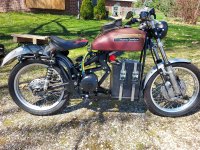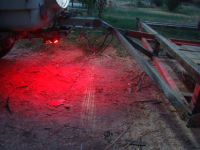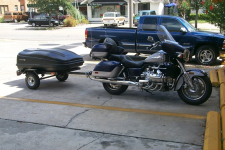Some thoughts:
There are some good solar-charging setup threads on the forum with actual data on solar output, etc., if you look around. They have better numbers than my guesstimates below.
I'll assume that you meant 12v 100Ah, not 12v 100A for the battery. A is current, Ah is capacity; completely different things, so you really should specify both at the same time. If you can post the actual specs for voltage, current, and capacity it would be useful.
With a 200w source panel, then if it were to be at max insolation and actually outputting it's max rated power, you only get 200w from it. Then the MPPT (or whatever converter you use) has an efficiency loss, depending on design and conditions. Let's call it 20% (you can test how much loss you really get). So let's say you get 160w out of the conversion. The battery itself has some efficiency loss, too, but it's probably small enough to leave out of the equation for guesstimate purposes.
Assuming the battery is 12v x 100Ah, that's 1200Wh. Assuming you got 160W continouously for say, 8 hours, you'd get enough to fill up the battery from empty.
Realistically you probably won't get anywhere near the panel's rated power, unless you have a sun tracker on it, keep it perfectly clean, and are on the equator at high noon.

My guess is you will probably see less than half the panel's rated power most of the time, so I'd guesstimate you will probably see 80-100w out of the conversion process, so it will really probably take more like 12-16 hours of good direct sunlight to fill up the battery from empty. Most likely that will average out to two to four days of just letting it sit there and recharge.
Next, for the conversion out of the solar battery and into your traction battery.
Your charger is only about 336W, at max load during the constant-current part of the charging curve. (84v x 4a). So the absolute max charging power you will ever see is that. As the battery fills up, power will drop.
For the inverter, assuming the 1000w is a continuous rating and not peak, it could handle almost three of those chargers, if your battery could handle 12A charging. (depends on the BMS charge port electronics, and the cells themselves, as well as the charger port wiring). Or you could get a bigger charger.
Either way, with 1200wh in the solar battery, it can, at most, recharge a 1200wh traction battery. For an 72v battery (84v full, for a 20s LiIon), that means 1200wh / 72v = 16.7Ah, at most.
If you are using this solar setup on this bike
I have a 50ah battery that can supply 150a continuous and 300a peak and a controller that can handle 120a continuous and 200a peak. Here are a few things that I don't understand: The cables from my battery to controller are 8ga. Shouldn't they be as big as the wires from my motor? I have a...

endless-sphere.com
then you have a 50Ah battery, so this solar setup will at best charge that up about 33% from empty.
A 50Ah battery at 72v, will be about 3600wh. If you need the ability to recharge that from empty, you'll need a bigger solar battery, and a lot more time between solar recharges with that small a panel setup. Or a bigger panel to lower recharging times.
If the usage of the solar setup is intended to be something other than the above, I'd recommend posting what you want it to do, so we can help you figure out how to do that specific job, under the specific conditions you need it to do that job.










